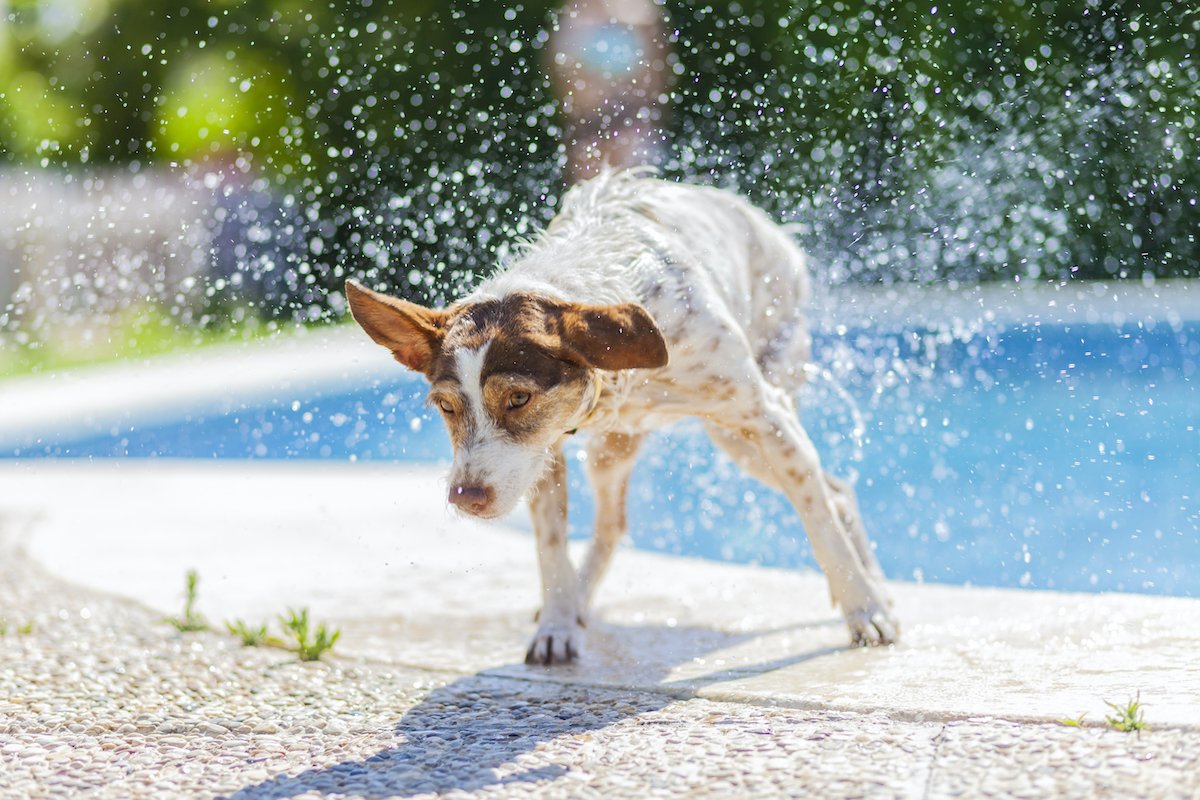Here's an Effective and Safe Trick to Help Your Dog When He's Overheated
Published: 2025. 05. 04 - Photos: Getty Images Hungary • 3 minutes reading

Published: 2025. 05. 04 - Photos: Getty Images Hungary • 3 minutes reading

Many dogs, especially working dogs, have been shown to have a tendency to ignore physiological signals associated with their body that can lead to overheating. Short-nosed, long-haired or larger-bodied breeds are also at increased risk in the warmer months, but in fact any dog can have problems with elevated temperatures.
Read our article to find out what to do if your dog is overheating. We show you the best way to cool down your dog quickly and safely.
 It is crucial to watch out for the warning signs of overheating
It is crucial to watch out for the warning signs of overheating
Dogs sweat minimally, panting to cool their bodies, but this method has its limitations. Once they reach their maximum temperature, they can no longer cool themselves and can suddenly collapse. Once in full heatstroke, they have about a 50% chance of survival. Shockingly, heat-related injuries are the most common non-traumatic cause of death for law enforcement and military dogs working in environments with limited cooling facilities. But even our pets are not safe when the thermometer's hygrometer is creeping upwards, whether they are urban or rural dogs!
 Teach your dog to put its head in the water on command
Teach your dog to put its head in the water on command
In a new study, Cynthia Otto, Director of the Penn Vet Working Dog Center, and colleagues have identified an effective cooling method that can be used by owners in the field. Their results, published in the Journal of the American Veterinary Medical Association, showed that one of four cooling protocols resulted in the lowest average body temperature after five minutes.
The technique is very simple, the dogs are taught how to hold their heads under 22°C water. This was the only intervention that lowered body temperature in the first 30 seconds and resulted in the lowest temperatures 6-40 minutes after the intervention.
The three other protocols included attaching two ice packs to the dog's neck, placing a wet towel around the dog's neck, and placing two wet towels under the dog's armpits.
Experts randomly selected 12 mentally and physically healthy dogs, aged 8 months to 8 years. The dogs were stopped when they had been exercising for 10 minutes or more and had reached a body temperature of 40.6°C and showed two or more signs of heat stress. These include, for example, a long, flat tongue or ears pulled back. All dogs completed all protocols with at least 48 hours between each protocol.
Before the study, each dog was trained to pick a toy or food from the bottom of a bucket of water. Each research day began with a veterinary exam, warm-up exercises and then a recall test in which the dogs had to run between two people standing 25 metres away to retrieve their favourite toy. This was followed by the designated cooling intervention. Experts fitted the dogs with accelerometers, heart rate monitors and ingestible body temperature capsules every day to help keep the four-legged creatures' temperatures below critical limits.
In the video below, researchers show how to teach a dog to stick its head in water:
Whatever the cause, hyperthermia can cause serious damage to your pet's body. Initially, dogs may appear stressed, pant, lose their sense of balance and become restless. Drooling may also occur and their gums may turn bluish or bright red.
As the hyperthermia progresses, the following clinical signs may be observed:
The results of the study are applicable not only to working dogs but also to pets. It is important to note that dogs with a pressed nose, such as the French bulldog, unfortunately find it more difficult to get rid of heat in the traditional way. They reach the critical temperature limit, which is dangerous for them, much sooner. It is essential that we, as owners, are aware of what we can do to reduce the temperature of our dogs, in many cases saving their lives.
Follow us!
facebook instagram youtube spotifyRelated articles

Yeast and Raw Pasta Can Kill Your Dog
Health • 3 minutes
How to keep your dog safe outdoors during the cold winter
Care • 5 minutes
Is your dog's paw slipping too often on the floor? Here's what you can do to help
Care • 3 minutes
As the temperature drops, your dog's skin becomes more sensitive: how to care for it properly
Care • 3 minutes